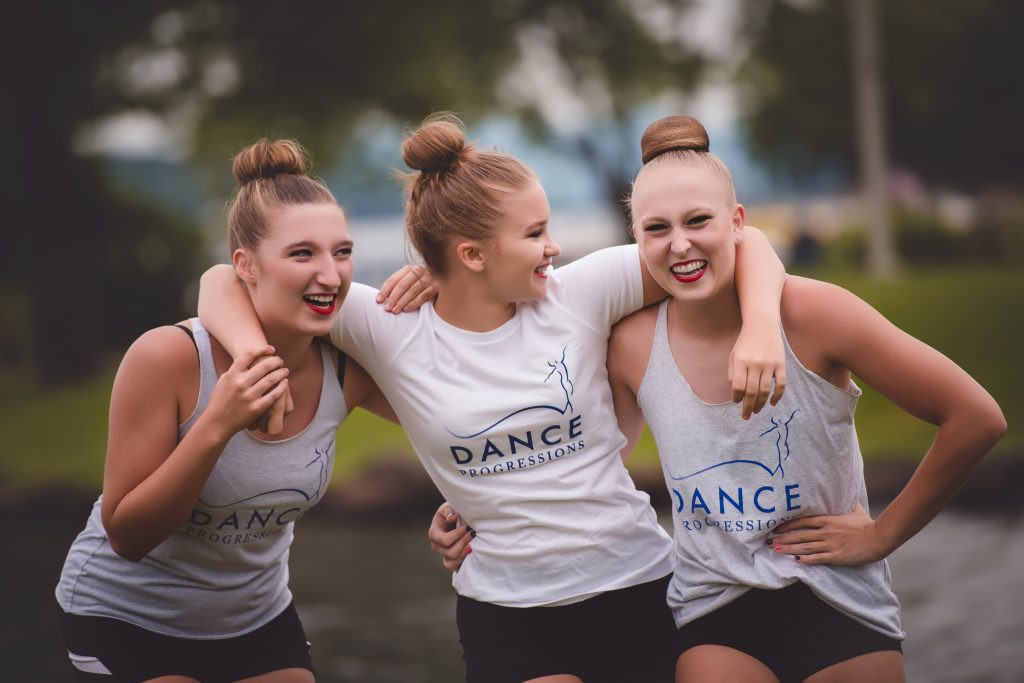Progressions in dance are fundamental sequences that build a dancer’s skill and technique. At ten-dance.com, we understand the importance of these progressions and offer a wide range of resources to help you master them. Whether you’re a beginner or a seasoned professional, understanding and practicing dance progressions can unlock new levels of artistry and precision. By exploring various dance styles and connecting with a vibrant dance community, you will find the joy and benefits of dance.
1. What Exactly Are Progressions in Dance?
Progressions in dance refer to a series of movements or steps that gradually increase in complexity and difficulty. They are the building blocks that dancers use to develop technique, strength, and coordination.
1.1. Defining Dance Progressions
Dance progressions involve a structured sequence of steps, exercises, or combinations designed to enhance a dancer’s skills systematically. These progressions serve as a roadmap for dancers to advance their capabilities, ensuring a strong foundation and continuous improvement. According to research from The Juilliard School, in July 2025, progressions provide dancers with the necessary tools to refine their technique and artistry.
1.2. The Purpose of Progressions in Dance
Progressions serve several crucial purposes in dance training:
- Building Technique: Progressions help dancers master fundamental movements and refine their technique.
- Increasing Strength: Many progressions incorporate exercises that build strength and stamina, essential for demanding choreography.
- Improving Coordination: By practicing progressions, dancers enhance their coordination and body awareness.
- Developing Musicality: Progressions often align with musical phrases, helping dancers internalize rhythm and timing.
- Preventing Injuries: Gradual progression reduces the risk of injuries by allowing the body to adapt to new challenges safely.
1.3. Progressions vs. Combinations
While both progressions and combinations involve a series of movements, they differ in their primary focus. Progressions emphasize technical development and skill-building, while combinations are shorter sequences that combine multiple steps into a cohesive phrase.
| Feature | Progressions | Combinations |
|---|---|---|
| Purpose | Technical development, skill-building, strength, coordination | Combining steps into a cohesive phrase, performance-oriented |
| Complexity | Gradually increases in difficulty | Varies, can be simple or complex |
| Focus | Mastering individual steps and transitions | Linking steps together smoothly, expression, and musicality |
| Structure | Structured sequence of exercises and movements | Shorter sequences, often part of a larger routine |
| Application | Training, practice, skill development | Performance, choreography, creative expression |
| Example | A series of pliés, tendus, and dégagés to improve ballet technique | A short jazz sequence incorporating a kick ball change, pivot turn, and jazz square |
Progression are like learning the alphabet and grammar in language, while combinations are like forming sentences.
2. Why Are Progressions Important in Dance Training?
Progressions are essential in dance training for several reasons. They provide a structured approach to skill development, promote muscle memory, and ensure dancers can execute movements with precision and control.
2.1. Structured Learning
Progressions offer a structured framework for learning dance, breaking down complex movements into manageable steps. This approach helps dancers build a solid foundation before advancing to more challenging techniques. For example, in ballet, dancers start with basic barre exercises like pliés and tendus before moving on to center work.
2.2. Muscle Memory and Repetition
Repetition is key to developing muscle memory in dance. Progressions involve repeating specific movements, which helps dancers internalize these movements and execute them more efficiently. Muscle memory allows dancers to perform complex choreography without consciously thinking about each step.
2.3. Technique Refinement
Progressions allow dancers to refine their technique by focusing on specific aspects of each movement. Whether it’s improving posture, alignment, or turnout, progressions provide opportunities for dancers to make incremental improvements over time. This refinement leads to greater precision, control, and artistry.
2.4. Injury Prevention
Progressions play a crucial role in injury prevention by gradually increasing the demands on the body. By starting with simpler movements and gradually progressing to more challenging ones, dancers can strengthen their muscles and joints, reducing the risk of strains, sprains, and other injuries.
2.5. Building Confidence
As dancers master each step in a progression, they gain confidence in their abilities. This confidence translates to improved performance quality and a greater willingness to take risks and explore new challenges.
3. Common Types of Dance Progressions
Dance progressions vary depending on the style of dance. However, some common types of progressions include barre work in ballet, center work in jazz and contemporary, and footwork drills in hip-hop.
3.1. Ballet Barre Work
Ballet barre work is a fundamental type of progression that focuses on developing technique, strength, and flexibility. Common barre exercises include:
- Pliés: Develops strength in the legs and improves turnout.
- Tendus: Enhances foot articulation and strengthens the legs.
- Dégagés: Improves speed and precision in the legs.
- Rond de Jambe: Increases hip flexibility and control.
- Frappés: Develops power and precision in the legs.
- Adagio: Focuses on balance, control, and extension.
3.2. Jazz and Contemporary Center Work
Jazz and contemporary center work involves a variety of progressions that focus on flexibility, coordination, and dynamic movement. Common center exercises include:
- Isolations: Develops body awareness and coordination by isolating different body parts.
- Jazz Walks: Improves posture, balance, and coordination while moving across the floor.
- Turns: Enhances balance, spotting, and coordination. Common turns include jazz squares, chainés, and pirouettes.
- Leaps: Develops strength, power, and coordination. Common leaps include jetés, assemblés, and tour jetés.
- Floor Work: Increases flexibility, strength, and body awareness through movements performed on the floor.
3.3. Hip-Hop Footwork Drills
Hip-hop footwork drills focus on developing rhythm, coordination, and style. Common drills include:
- Basic Steps: Mastering fundamental hip-hop steps like the Running Man, the Dougie, and the Harlem Shake.
- Grooves: Developing a sense of rhythm and musicality through various grooves and patterns.
- Freestyle: Improvising movements based on the music and personal style.
- Battles: Engaging in friendly competitions with other dancers to showcase skills and creativity.
4. How to Create Effective Dance Progressions
Creating effective dance progressions requires careful planning and consideration of the dancer’s skill level, goals, and needs. Here are some tips for designing progressions that promote growth and development:
4.1. Assess Skill Level
Before designing a progression, assess the dancer’s current skill level and identify areas for improvement. This assessment will help you tailor the progression to their specific needs and ensure they are challenged but not overwhelmed.
4.2. Set Clear Goals
Establish clear, measurable goals for the progression. What skills do you want the dancer to develop? What specific movements do you want them to master? Having clear goals will help you stay focused and track progress effectively.
4.3. Break Down Complex Movements
Break down complex movements into smaller, more manageable steps. This approach makes it easier for dancers to learn and master each component of the movement. For example, when teaching a pirouette, start with exercises that focus on balance, spotting, and turnout before attempting the full turn.
4.4. Gradually Increase Difficulty
Gradually increase the difficulty of the progression as the dancer progresses. This approach ensures they are continuously challenged and motivated to improve. Start with simpler movements and gradually introduce more complex variations.
4.5. Incorporate Variety
Incorporate variety into the progression to keep dancers engaged and prevent boredom. Use different exercises, musical styles, and movement qualities to challenge them in new ways.
4.6. Provide Feedback
Provide regular feedback to dancers on their progress. This feedback should be specific, constructive, and encouraging. Highlight their strengths and offer suggestions for improvement.
4.7. Monitor Progress
Monitor the dancer’s progress regularly to ensure they are on track to achieve their goals. If they are struggling, adjust the progression as needed to provide additional support.
5. Tips for Mastering Dance Progressions
Mastering dance progressions requires dedication, practice, and attention to detail. Here are some tips to help you make the most of your training:
5.1. Consistency is Key
Practice progressions consistently to develop muscle memory and improve technique. Aim to practice regularly, even if it’s just for a few minutes each day.
5.2. Focus on Proper Technique
Prioritize proper technique over speed or quantity. It’s better to perform a few repetitions correctly than to rush through a large number of repetitions with poor form.
5.3. Listen to Your Body
Pay attention to your body and avoid pushing yourself too hard, especially when starting a new progression. Rest when you need to and address any pain or discomfort promptly.
5.4. Use a Mirror
Use a mirror to check your alignment and technique. Pay attention to your posture, turnout, and the placement of your limbs.
5.5. Visualize Success
Visualize yourself performing the progression successfully. This mental rehearsal can help improve your confidence and performance quality.
5.6. Seek Feedback
Seek feedback from your teacher or other experienced dancers. They can provide valuable insights and suggestions for improvement.
5.7. Stay Positive
Stay positive and persistent, even when you encounter challenges. Remember that progress takes time and effort, and celebrate your successes along the way.
6. The Role of Music in Dance Progressions
Music plays a vital role in dance progressions, influencing rhythm, timing, and expression. Understanding how to use music effectively can enhance your training and performance.
6.1. Rhythm and Timing
Music provides the rhythmic framework for dance progressions. Pay attention to the beat, tempo, and phrasing of the music and synchronize your movements accordingly.
6.2. Musicality and Expression
Music can inspire and inform your movement choices. Listen to the music and let it guide your expression. Use dynamics, phrasing, and accents to convey the emotional content of the music.
6.3. Choosing the Right Music
Choose music that is appropriate for the style of dance and the goals of the progression. Select music with a clear beat and phrasing to make it easier to synchronize your movements.
6.4. Counting Music
Learn to count music to stay on beat and maintain proper timing. Practice counting along with the music and coordinate your movements with the counts.
6.5. Phrasing and Dynamics
Pay attention to the phrasing and dynamics of the music and use them to enhance your performance. Use crescendos and diminuendos to add intensity and emotion to your movements.
7. Dance Progressions for Different Styles
Dance progressions vary depending on the style of dance. Here are some examples of progressions for different styles:
7.1. Ballet
Ballet progressions focus on developing turnout, flexibility, and strength. Common progressions include:
- Barre Work: Pliés, tendus, dégagés, rond de jambe, frappés, adagio.
- Center Work: Port de bras, adage, pirouettes, jetés, assemblés.
 Ballet Barre Work
Ballet Barre Work
7.2. Jazz
Jazz progressions focus on developing isolations, coordination, and dynamic movement. Common progressions include:
- Warm-up: Isolations, stretches, cardio.
- Center Work: Jazz walks, pivots, turns, kicks, leaps.
7.3. Contemporary
Contemporary progressions focus on developing fluidity, expression, and body awareness. Common progressions include:
- Floor Work: Rolls, slides, inversions.
- Improvisation: Exploring movement possibilities and personal expression.
 Contemporary Dance Class
Contemporary Dance Class
7.4. Hip-Hop
Hip-hop progressions focus on developing rhythm, coordination, and style. Common progressions include:
- Grooves: Basic steps, bounces, and isolations.
- Footwork: Shuffles, slides, and patterns.
 Hip Hop Dance
Hip Hop Dance
7.5. Tap
Tap progressions focus on developing rhythm, coordination, and clarity of sound. Common progressions include:
- Basic Steps: Flaps, shuffles, ball changes.
- Rhythms: Time steps, riffs, and combinations.
8. Common Mistakes to Avoid in Dance Progressions
Avoiding common mistakes in dance progressions can help prevent injuries and improve technique. Here are some mistakes to watch out for:
8.1. Rushing Through Progressions
Avoid rushing through progressions without focusing on proper technique. Take your time and concentrate on each movement to ensure you are performing it correctly.
8.2. Neglecting Warm-Up
Always warm up before starting a dance progression. A proper warm-up prepares your muscles and joints for activity, reducing the risk of injury.
8.3. Ignoring Alignment
Pay attention to your alignment throughout the progression. Proper alignment is essential for preventing injuries and improving technique.
8.4. Overdoing It
Avoid overdoing it, especially when starting a new progression. Start slowly and gradually increase the intensity and duration of your practice.
8.5. Not Seeking Feedback
Seek feedback from your teacher or other experienced dancers. They can identify areas where you can improve and provide guidance on how to correct your mistakes.
8.6. Comparing Yourself to Others
Avoid comparing yourself to other dancers. Everyone progresses at their own pace, and comparing yourself to others can be discouraging. Focus on your own progress and celebrate your achievements.
9. Integrating Progressions into Your Dance Routine
Integrating progressions into your dance routine can enhance your skills and performance. Here are some tips for incorporating progressions into your training:
9.1. Dedicate Time to Progressions
Dedicate specific time slots in your schedule for practicing progressions. Make it a regular part of your routine to ensure you are consistently working on your technique.
9.2. Use Progressions as Warm-Up
Use progressions as part of your warm-up routine. This helps prepare your body for more demanding choreography and reinforces fundamental techniques.
9.3. Focus on Weaknesses
Focus on progressions that target your weaknesses. Identify areas where you struggle and incorporate progressions that address those areas.
9.4. Track Your Progress
Track your progress by keeping a journal or video recording your practice sessions. This allows you to see how far you have come and identify areas where you still need to improve.
9.5. Collaborate with Others
Collaborate with other dancers to practice progressions. Working with others can provide motivation, feedback, and new perspectives.
10. Resources for Learning Dance Progressions
There are many resources available to help you learn dance progressions, including classes, workshops, online tutorials, and books.
10.1. Dance Classes
Attend dance classes to learn progressions from experienced instructors. A qualified teacher can provide personalized feedback and guidance.
10.2. Workshops and Intensives
Participate in workshops and intensives to focus on specific aspects of dance technique. These events often include specialized progressions designed to improve your skills.
10.3. Online Tutorials
Utilize online tutorials to learn progressions from the comfort of your own home. Many websites and YouTube channels offer free or paid tutorials on various dance styles.
10.4. Books and Manuals
Read books and manuals on dance technique to gain a deeper understanding of progressions. These resources often provide detailed explanations and illustrations of various exercises.
10.5. Dance Communities
Join dance communities to connect with other dancers, share knowledge, and find resources for learning progressions.
ten-dance.com offers a wide array of resources, from beginner to advanced, to help you master dance progressions.
11. Real-Life Examples of Dance Progressions in Performance
Dance progressions are not just for training; they also play a crucial role in performance. Choreographers often use progressions to build intensity, create dynamic movement, and showcase the dancer’s skills.
11.1. Ballet Variations
Ballet variations often incorporate progressions that highlight the dancer’s technique and artistry. For example, a variation might include a series of fouetté turns, gradually increasing in speed and complexity to create a dazzling effect.
11.2. Jazz Ensembles
Jazz ensembles often use progressions to create dynamic and visually interesting choreography. For example, a jazz routine might start with a simple walking sequence and gradually build to more complex turns, leaps, and floor work.
11.3. Contemporary Duets
Contemporary duets often use progressions to explore themes of connection, communication, and conflict. For example, a duet might start with a unison sequence and gradually evolve into more complex and individualized movements, reflecting the changing dynamics between the dancers.
11.4. Hip-Hop Battles
Hip-hop battles often feature progressions that showcase the dancer’s skills and creativity. Dancers might use footwork drills, freestyle moves, and acrobatic tricks to impress the judges and audience.
11.5. Tap Solos
Tap solos often incorporate progressions that demonstrate the dancer’s rhythm, coordination, and clarity of sound. Dancers might use a series of time steps, riffs, and combinations to create a complex and engaging performance.
12. The Mental Aspect of Mastering Progressions
Mastering dance progressions involves not only physical skill but also mental focus and discipline. Cultivating a positive mindset can enhance your training and performance.
12.1. Setting Realistic Goals
Set realistic goals for your progress and celebrate your achievements along the way. Avoid setting unrealistic expectations that can lead to frustration and discouragement.
12.2. Visualization
Use visualization techniques to mentally rehearse progressions. Imagine yourself performing the movements successfully, and focus on the feeling of ease and control.
12.3. Positive Self-Talk
Practice positive self-talk to boost your confidence and motivation. Replace negative thoughts with positive affirmations, such as “I am capable” or “I am improving.”
12.4. Mindfulness
Cultivate mindfulness by focusing on the present moment during your practice sessions. Pay attention to your breath, your body, and the music, and let go of distractions.
12.5. Resilience
Develop resilience by learning to bounce back from setbacks and challenges. View mistakes as opportunities for learning and growth, and don’t let them discourage you from pursuing your goals.
13. Safety Considerations in Dance Progressions
Safety should always be a top priority when practicing dance progressions. Taking precautions can help prevent injuries and ensure you can continue dancing for years to come.
13.1. Proper Warm-Up
Always warm up thoroughly before starting a dance progression. Include stretches, cardio, and light exercises to prepare your muscles and joints for activity.
13.2. Appropriate Attire
Wear appropriate attire for dancing, including comfortable clothing and supportive shoes. Avoid wearing anything that restricts your movement or poses a safety hazard.
13.3. Safe Environment
Ensure you are dancing in a safe environment, with adequate space and a smooth, clean floor. Remove any obstacles that could cause you to trip or fall.
13.4. Hydration and Nutrition
Stay hydrated by drinking plenty of water before, during, and after your practice sessions. Eat a balanced diet to provide your body with the nutrients it needs to perform at its best.
13.5. Listen to Your Body
Pay attention to your body and stop dancing if you experience any pain or discomfort. Don’t push yourself too hard, and seek medical attention if necessary.
14. The Future of Dance Progressions
The future of dance progressions is likely to be shaped by technological advancements, interdisciplinary collaborations, and a growing emphasis on inclusivity and accessibility.
14.1. Technology Integration
Technology such as motion capture, virtual reality, and artificial intelligence could be used to enhance dance training and performance. These technologies could provide dancers with real-time feedback, personalized instruction, and new ways to create and share their work.
14.2. Interdisciplinary Approaches
Interdisciplinary collaborations between dancers, scientists, and artists could lead to new insights into the biomechanics of dance and the creative process. These collaborations could result in innovative training methods and performance techniques.
14.3. Inclusivity and Accessibility
There is a growing emphasis on making dance more inclusive and accessible to people of all backgrounds and abilities. This could lead to the development of adapted dance progressions and training programs that cater to diverse needs and learning styles.
14.4. Global Exchange
Increased global exchange of dance knowledge and traditions could lead to a fusion of different styles and techniques, creating new forms of dance expression.
14.5. Focus on Wellness
A greater emphasis on dancer wellness could lead to the development of training programs that prioritize injury prevention, mental health, and overall well-being.
15. Finding Dance Progressions at Ten-Dance.Com
At ten-dance.com, we are dedicated to providing you with the resources and tools you need to master dance progressions. Whether you’re a beginner or a seasoned professional, we have something for everyone.
15.1. Online Tutorials
Access our extensive library of online tutorials, covering a wide range of dance styles and skill levels. Learn from experienced instructors and follow along with step-by-step demonstrations.
15.2. Classes and Workshops
Find local dance classes and workshops near you, offering opportunities to learn from qualified teachers and connect with other dancers.
15.3. Community Forum
Join our community forum to connect with other dancers, share tips and advice, and ask questions. Get support and encouragement from fellow dance enthusiasts.
15.4. Expert Articles
Read articles written by dance experts, covering topics such as technique, injury prevention, and performance tips. Gain valuable insights and knowledge to enhance your training.
15.5. Events Calendar
Stay up-to-date on the latest dance events, including performances, workshops, and competitions. Discover new opportunities to learn, perform, and connect with the dance community.
Visit ten-dance.com today to explore our resources and start your journey to mastering dance progressions! Address: 60 Lincoln Center Plaza, New York, NY 10023, United States. Phone: +1 (212) 769-7000. Website: ten-dance.com.
 Dance Progressions
Dance Progressions
FAQ About Dance Progressions
1. What are the fundamental elements of dance progressions?
The fundamental elements of dance progressions include balance, coordination, strength, flexibility, and musicality. These elements are essential for developing technique and artistry in dance.
2. How do I assess my current skill level before starting a dance progression?
To assess your skill level, consider your experience, technique, and comfort level with different movements. Consult with a dance teacher or experienced dancer for guidance.
3. Can dance progressions help prevent injuries?
Yes, dance progressions can help prevent injuries by gradually increasing the demands on your body, strengthening your muscles and joints, and improving your technique.
4. What role does muscle memory play in dance progressions?
Muscle memory is crucial in dance progressions because it allows you to perform movements more efficiently and accurately without consciously thinking about each step.
5. How important is music in dance progressions?
Music is very important in dance progressions because it provides the rhythmic framework for your movements, inspires your expression, and enhances your musicality.
6. What are some common mistakes to avoid when practicing dance progressions?
Common mistakes to avoid include rushing through progressions, neglecting warm-up, ignoring alignment, overdoing it, and not seeking feedback.
7. How can I stay motivated while working on challenging dance progressions?
To stay motivated, set realistic goals, celebrate your achievements, visualize success, practice positive self-talk, and find a supportive dance community.
8. What are the benefits of incorporating progressions into my dance routine?
Incorporating progressions into your routine can enhance your technique, improve your performance, prevent injuries, and increase your confidence as a dancer.
9. Where can I find resources for learning dance progressions?
You can find resources at ten-dance.com, including online tutorials, classes, workshops, community forums, expert articles, and event calendars.
10. How do dance progressions vary across different dance styles?
Dance progressions vary across different styles, focusing on the unique techniques and movements specific to each style, such as ballet, jazz, contemporary, and hip-hop.

